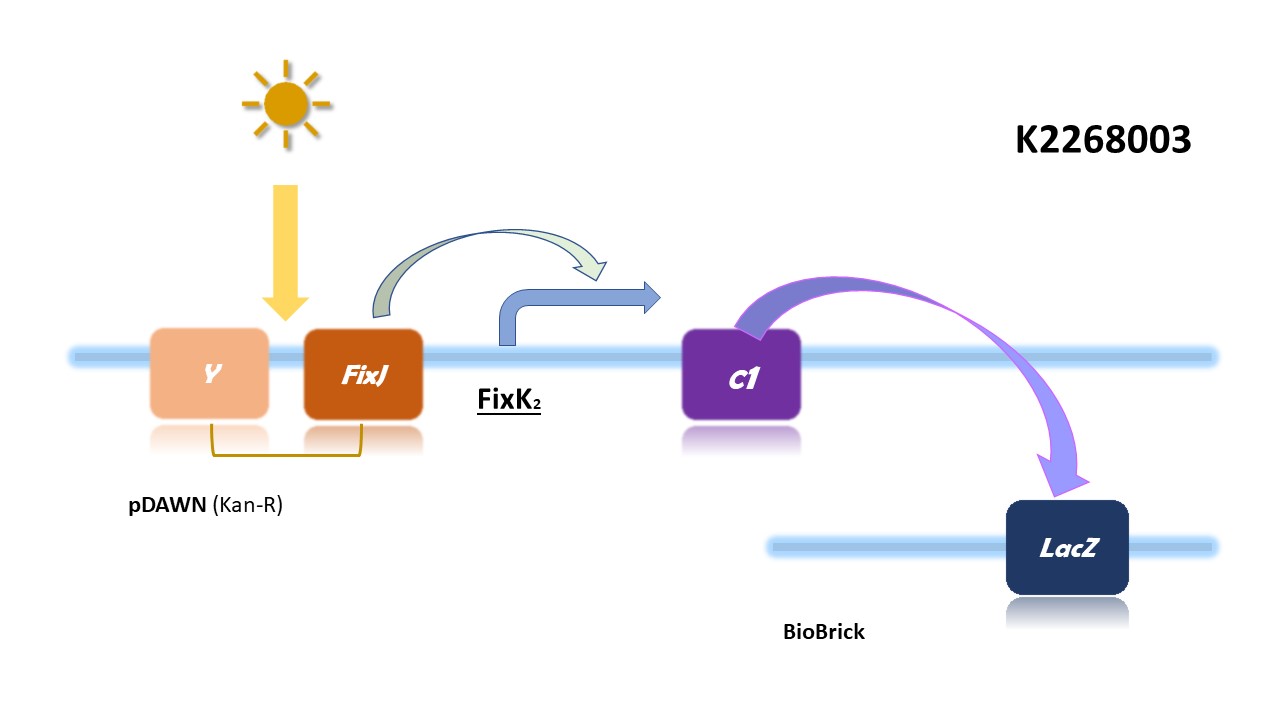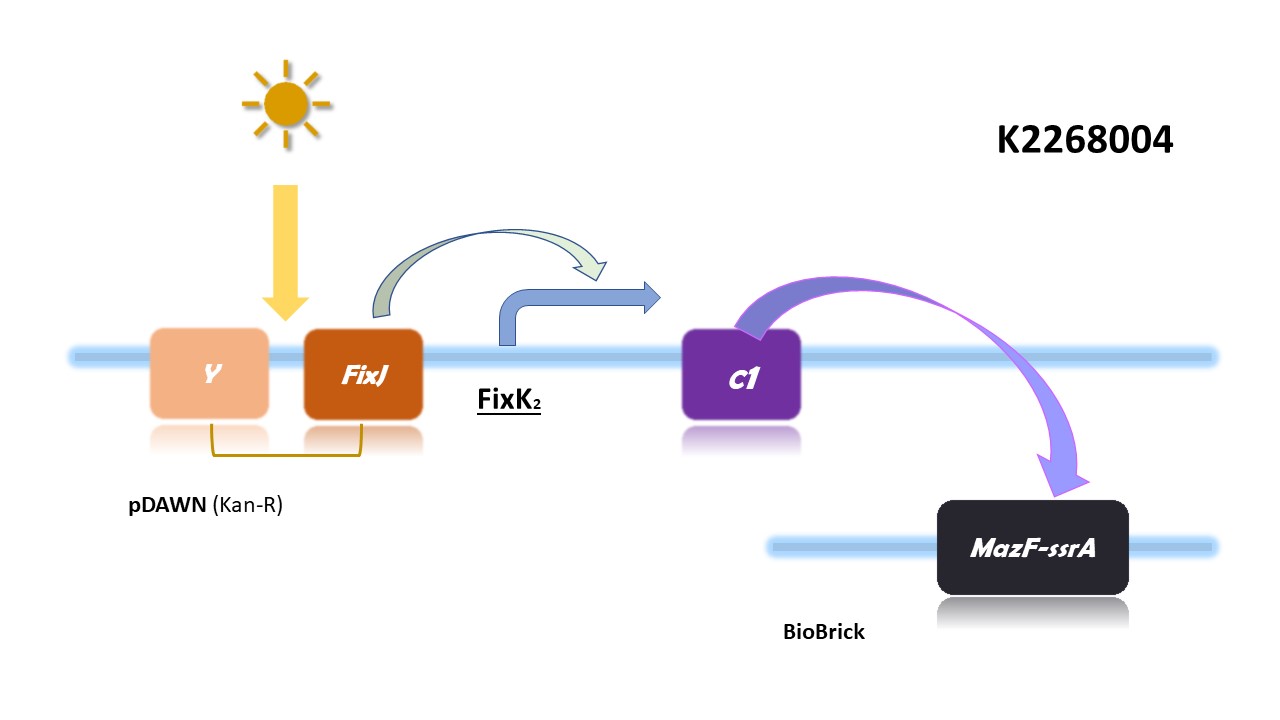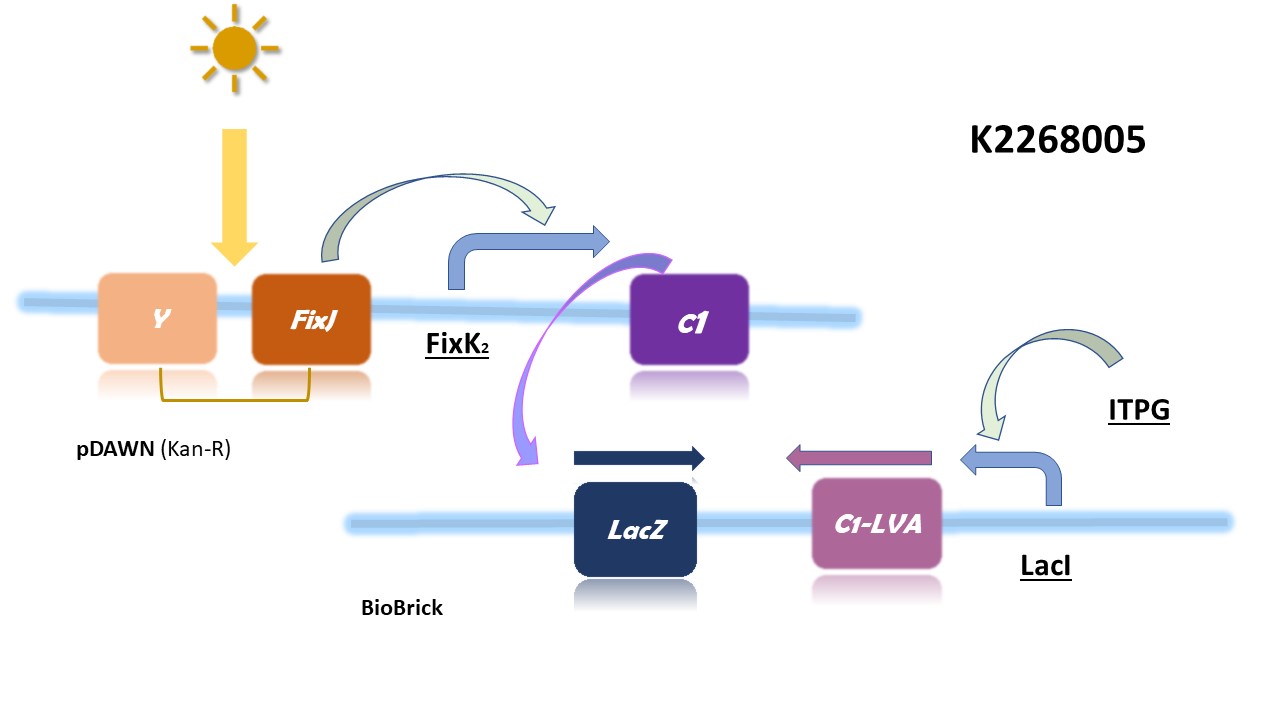Contents
Designing a Kill-Switch
We initially attempted to create engineered bacteria that break down nitrogenous waste effectively in wastewater treatment plant. Since our E. coli can survive in saltwater, creating a kill switch for our engineered bacteria will, in theory, prevent our bacteria from thriving outside wastewater treatment plants.
Control of Gene Expression by pDawn alone
3.1 (K2268003): When light is present, c1 WILL NOT be produced. In theory, the expression of LacZ should be maximal. This is intended to be the non-lethal version of our kill-switch.
4.1 (K2268004): When light is present, c1 WILL NOT be produced. In theory, the expression of MazF should be maximal.
Control of Gene Expression by pDawn and supplementary cI Repressor
3.2(K2268005): When light is present with no ITPG, c1 WILL NOT be produced. In theory, maximal expression of LacZ should be produced. This is a non-lethal version of our kill switch.
4.2(K2268006): When light is present with no ITPG, c1 WILL NOT be produced. In theory, maximal expression of MazF should be produced.
Light control by pDawn
In order for our design to work, the light induction module present on pDawn must be operational. We tested pDawn alone, in the dark and in light, to verify that expression of the RFP reporter only occurs in the light (see petri dish below). We also observed this red fluorescence when pDawn was used in conjunction with our constructs (data not shown).







